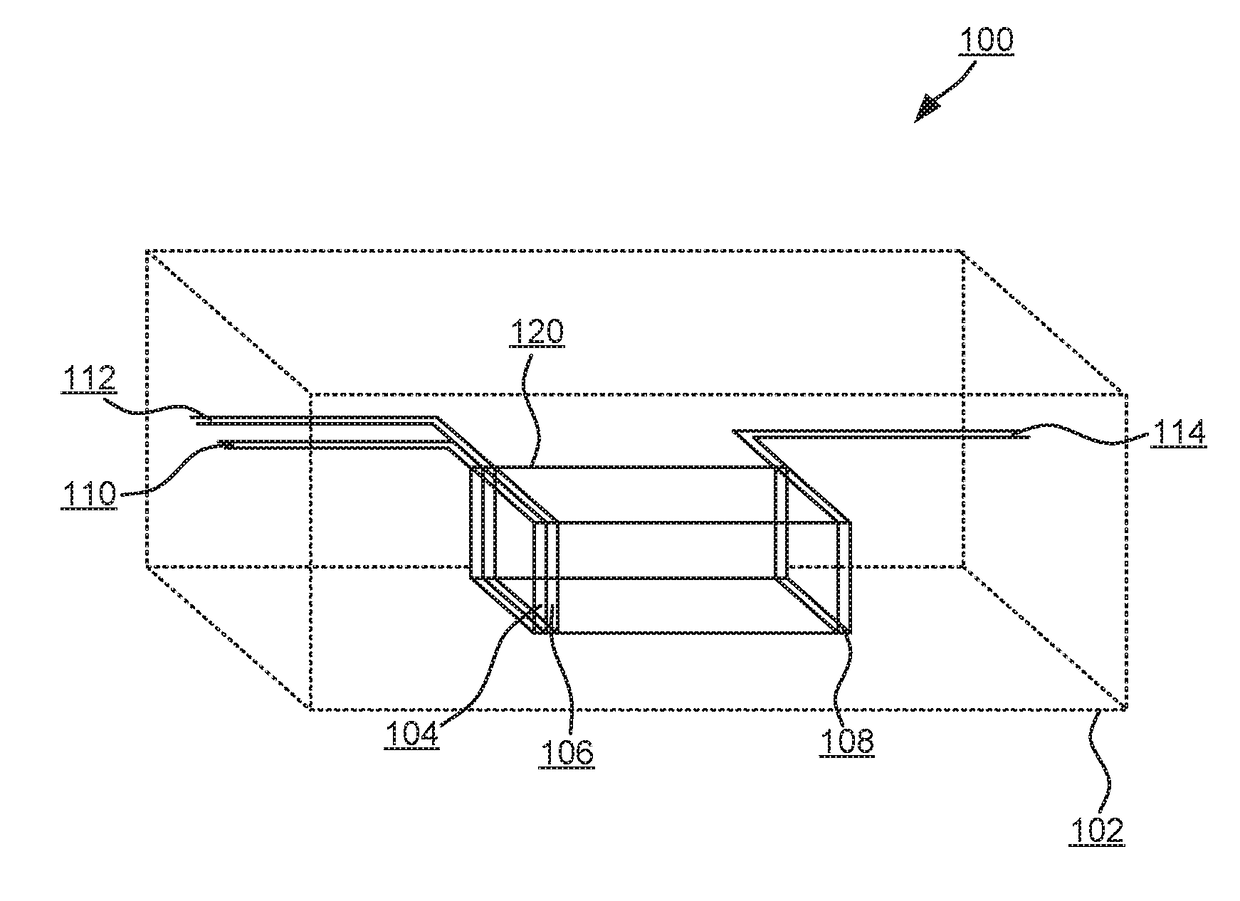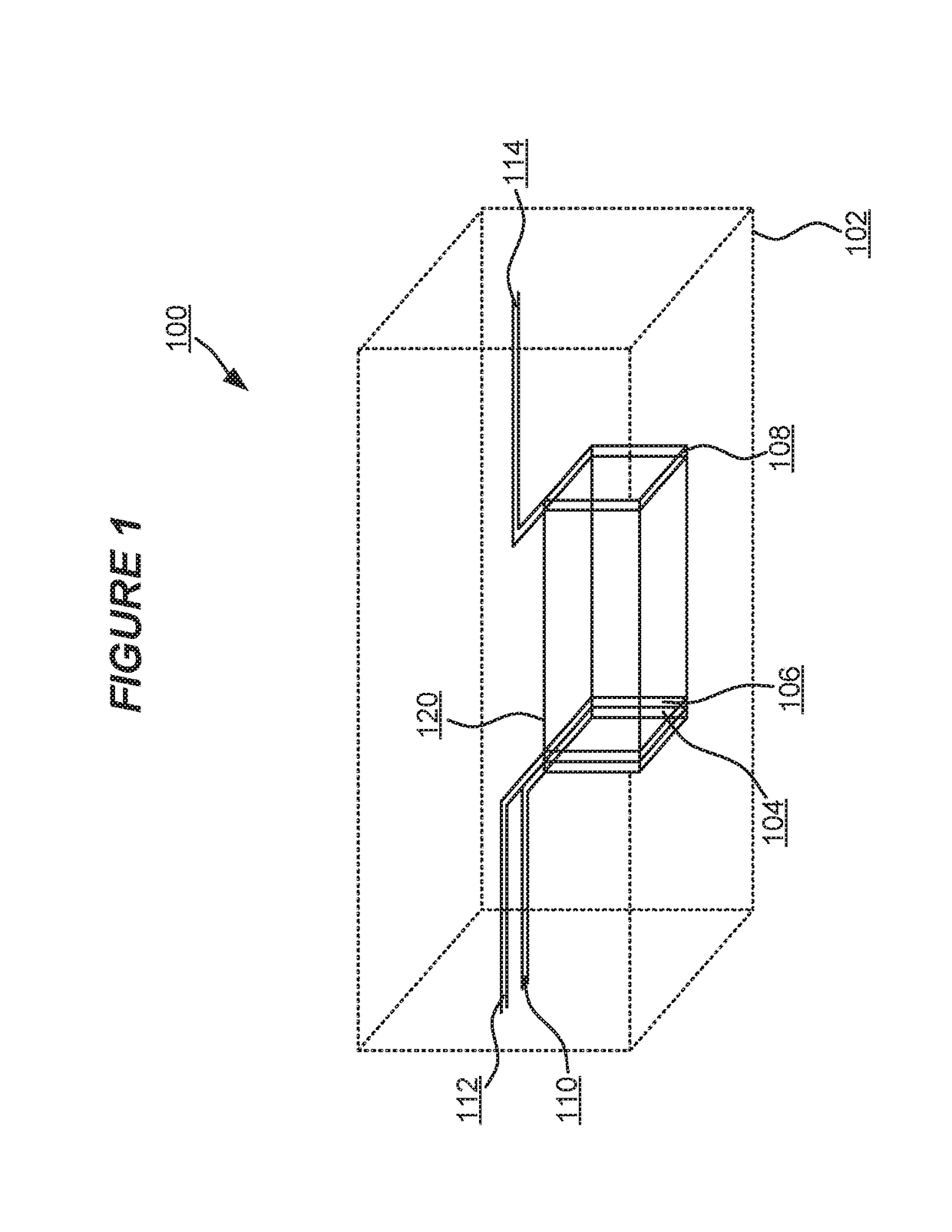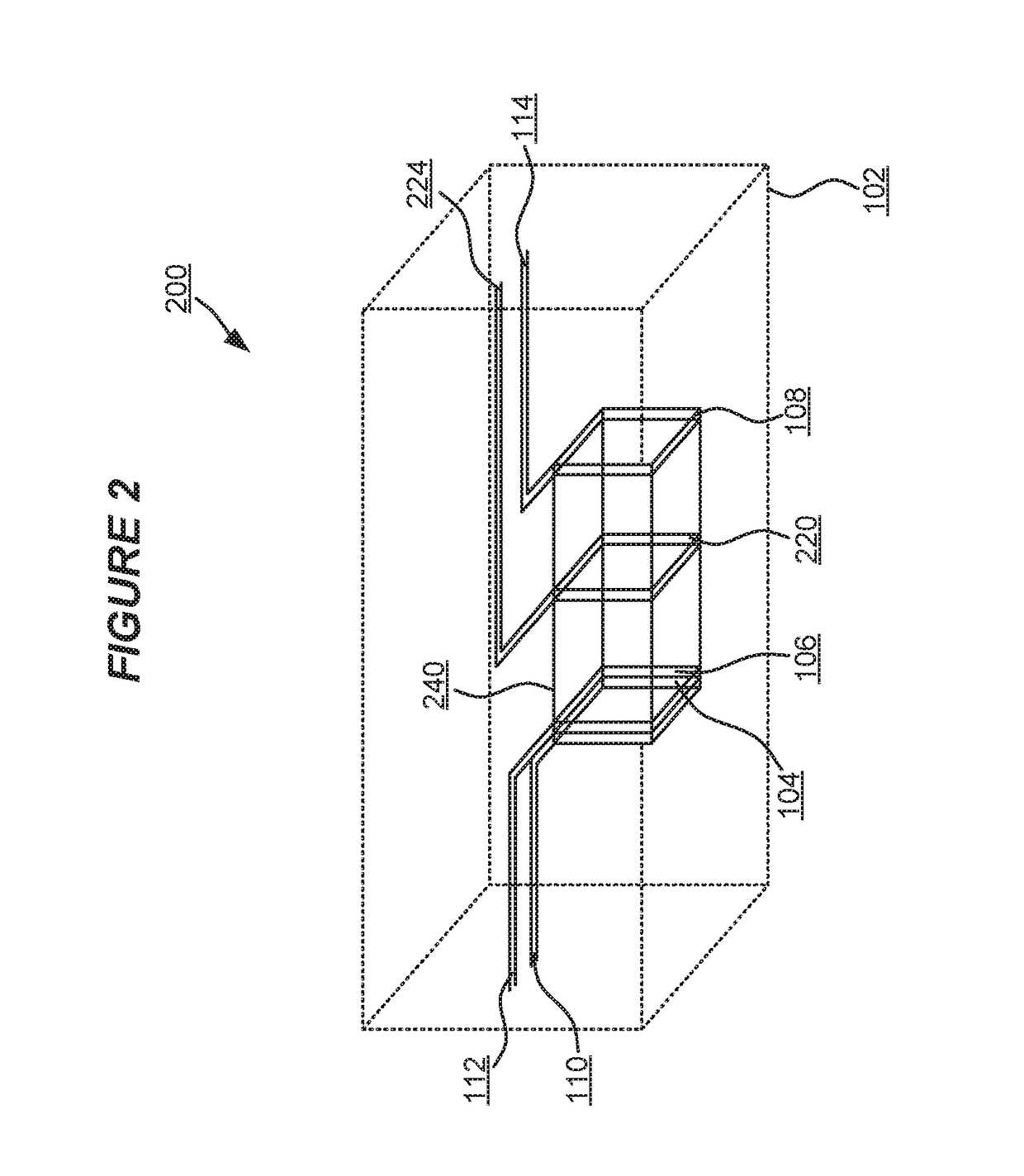Printed active device
a printed active device and electronic component technology, applied in the direction of additive manufacturing processes, tubes with electrostatic control, coatings, etc., can solve the problems of reducing the production efficiency of electronic devices, and reducing the overall weight of the article. , the effect of reducing the overall weight of the articl
- Summary
- Abstract
- Description
- Claims
- Application Information
AI Technical Summary
Benefits of technology
Problems solved by technology
Method used
Image
Examples
Embodiment Construction
[0048]FIG. 1 depicts an exemplary three dimensional article 100 with integral diode 120 electronic component produced in accordance with embodiments of the present invention. The article 100 is constructed using an additive manufacturing approach including one or more techniques such as, inter alia: an extrusion deposition process; a material binding process such as selective laser sintering, direct metal laser sintering, selective laser melting or electron beam melting; and / or a stereolithographic approach such as photopolymerisation. Such techniques are also known as 3D printing, and a product or resulting article of such techniques is known as a 3D printed article or apparatus. The article 100 is comprised of a substantive structure 102 such as a body, framework, lattice, arrangement or other structure substantially constituting the article, otherwise referred to as the fabric of the article. For example, the article 100 can be, inter alia: a part; prototype; component; appliance...
PUM
| Property | Measurement | Unit |
|---|---|---|
| non-electrically conductive | aaaaa | aaaaa |
| electrically conductive | aaaaa | aaaaa |
| electrical potential | aaaaa | aaaaa |
Abstract
Description
Claims
Application Information
 Login to View More
Login to View More - R&D
- Intellectual Property
- Life Sciences
- Materials
- Tech Scout
- Unparalleled Data Quality
- Higher Quality Content
- 60% Fewer Hallucinations
Browse by: Latest US Patents, China's latest patents, Technical Efficacy Thesaurus, Application Domain, Technology Topic, Popular Technical Reports.
© 2025 PatSnap. All rights reserved.Legal|Privacy policy|Modern Slavery Act Transparency Statement|Sitemap|About US| Contact US: help@patsnap.com



